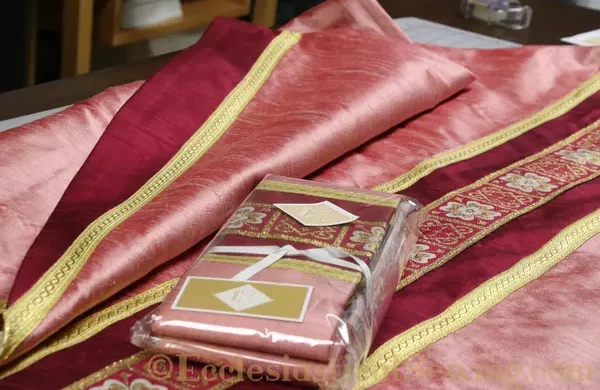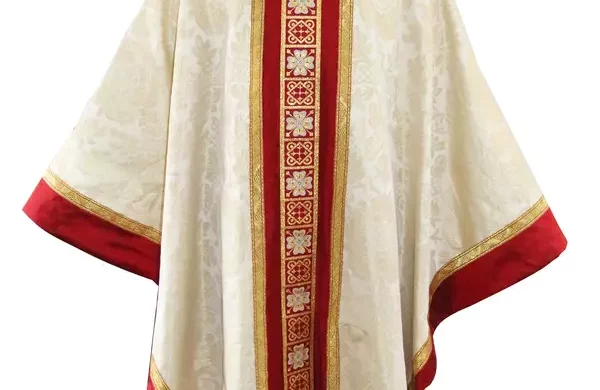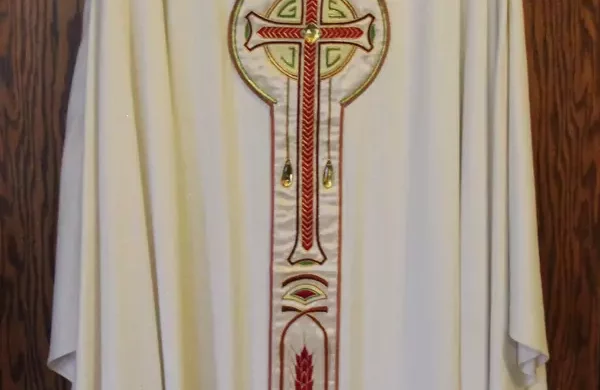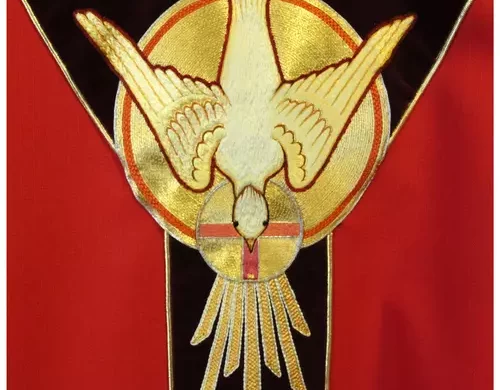
Rose is a color that falls under the heading of the purples and violets of the seasons of Advent and Lent. Rose as a vestment color is seen and used twice during the church year calendar. The days set aside for rose vestments and altar hangings are the Third Sunday of Advent and the Fourth Sunday of Lent.
Like this:
Like Loading...

The chasuble pattern is a graceful Monastic style chasuble that is wide, full, and long. The pattern is created in several sizes and has things like lengthening and shortening lines for further customization. The pattern has notches for matching seams when sewing. There is a separate pattern piece for the front and back orphrey band as well as a neckline facing piece.
Like this:
Like Loading...

The Chasuble Percy Dearmer The Chasuble Percy Dearmer: Did you ever look at a poncho and think that it reminded you of something familiar? We know that the poncho,… Read more The Chasuble Percy Dearmer →
Like this:
Like Loading...

At O’Fallon Monastery, the Sisters created a special vestment collection, including this chasuble with a traditional Dove symbolizing the Holy Spirit on Pentecost. The design blends hand and machine embroidery, using silk and gold threads for a beautiful finish.
Like this:
Like Loading...
The chasuble, known as the Westminster Vestment, is part of the heritage collection of Ushaw College, the former Catholic seminary at Ushaw Moor, near Durham.
Like this:
Like Loading...





You must be logged in to post a comment.